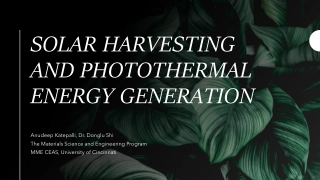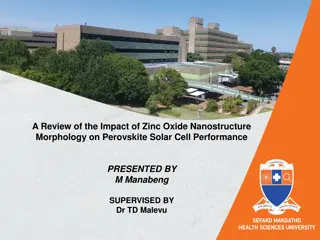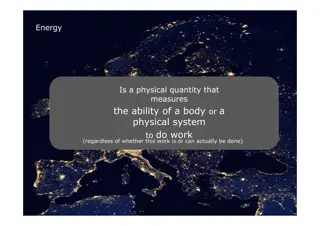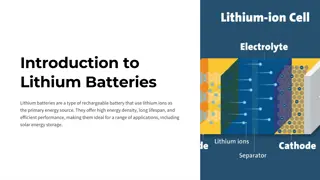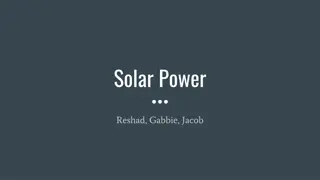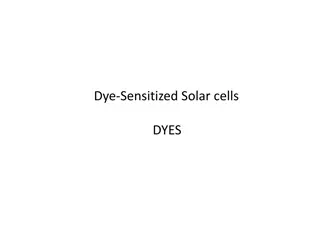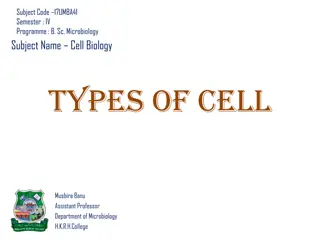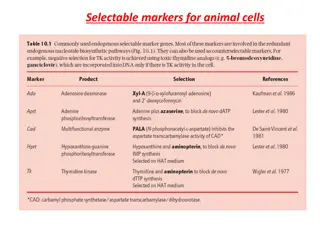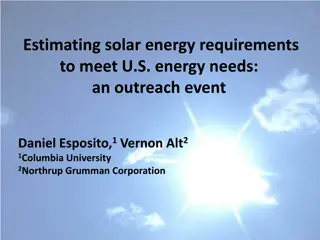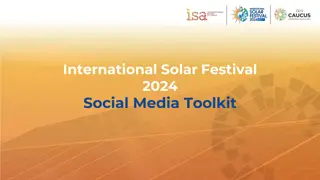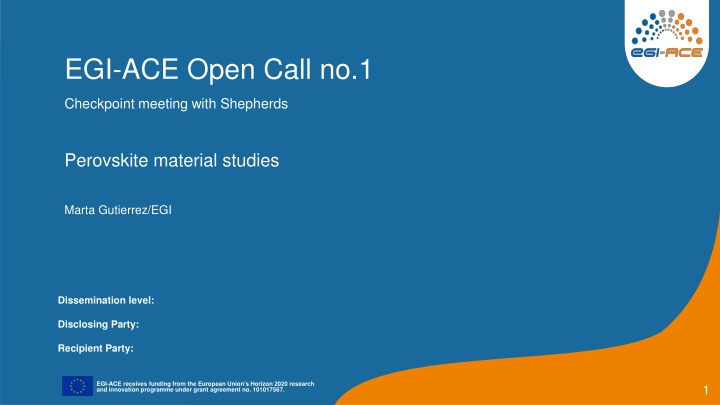
Advancing Perovskite Solar Cells Research
Molecular dynamics simulations and machine learning techniques are being used to characterize perovskite materials for energy-efficient solar cells. The project aims to develop efficient and stable solar cells fabricated with environmentally friendly technologies for wide adoption in buildings.
Download Presentation

Please find below an Image/Link to download the presentation.
The content on the website is provided AS IS for your information and personal use only. It may not be sold, licensed, or shared on other websites without obtaining consent from the author. If you encounter any issues during the download, it is possible that the publisher has removed the file from their server.
You are allowed to download the files provided on this website for personal or commercial use, subject to the condition that they are used lawfully. All files are the property of their respective owners.
The content on the website is provided AS IS for your information and personal use only. It may not be sold, licensed, or shared on other websites without obtaining consent from the author.
E N D
Presentation Transcript
EGI-ACE Open Call no.1 Checkpoint meeting with Shepherds Perovskite material studies Marta Gutierrez/EGI Dissemination level: Disclosing Party: Recipient Party: EGI-ACE receives funding from the European Union's Horizon 2020 research and innovation programme under grant agreement no. 101017567. 1
Outline Background about the scientific use case Ambition, Impact and Challenges Capacity Requirements Integration Support First results Footer date/month/year 2
Background about the scientific use case Scientific use cases Molecular dynamics simulations will be run to characterize halide perovskite materials, interfaces and defects for energy efficient solar cells. LAMMPS software package will be used to run these simulations. (Iceland) Density functional theory (DFT) and machine learning (ML) with SIESTA code and artificial neural networks using TensorFlow library with Keras frontend will be used to predict electronic properties of hybrid perovskite materials and interfaces. (Romania) Footer date/month/year 3
Team involved Provider : CLOUDIFIN (IFIN-HH) Mihnea Dulea, Ionut Vasile, zdragos@nipne.ro Community: Department of Engineering, Reykjavik University (RU), Iceland: Andrei Manolescu, Kristinn Torfason Faculty of Physics, University of Bucharest, Romania: Alexandru NEMNES 4
Ambition, Impact, Challenge(s) In line with the perla-pv project: to develop efficient, stable, reproducible standard and inverted perovskite solar cells (PSC) and photovoltaic modules fabricated with affordable large area and environmental friendly technologies for wide adoption in public and private buildings to strengthen the knowledge base concerning the application of environmental technology; new knowledge will be acquired regarding how PSCs can be optimized for large scale applications and how can they be fabricated using environmentally friendly technologies with low carbon footprint The beneficiaries will be: The Nanophysics Center at the Reykjavik University (http://nano.ru.is/) DFCTI/IFIN-HH, Romania (lead by Dr. George Alexandru Nemnes) National Institute of Material Physics, Romania (lead by Dr. Ioana Pintilie) Footer date/month/year 5
Capacity Requirements Cloud Compute 320vCPUS (AMD EPYC CPUs) 8VMs, allocation per VM: 40 vCPUs , 128GB RAM, 80GB HDD local storage Online Storage NFS mounted shared disk: 20GB Will add GPU support at later stage to run the ML use case Footer date/month/year 6
Integration Support CLOUDIFIN The access to the cluster was done through the master VM which has two network interfaces, one public (Ethernet 10Gbps, public IPv4) and one private (Infiniband 100Gbps) to the cluster. The access is done through ssh, and passwordless ssh between the nodes of the cluster on the private network. The Infiniband network cards were virtualized and attached to the VMs. Tensorflow and Keras software packages OpenMPI version 4.1.2a1 with Infiniband support Siesta simulation software with MPI support SLURM SLA was agreed: https://documents.egi.eu/document/3761 Footer date/month/year 7
First results Looking for alternatives to Silicon for photovoltaic applications. Perovskite breakthrough materials as they are good photo absorbers, low cost. Running atomic modelling and simulations of materials to study the electronic properties. They have performed 20 runs, parallelized in 24 double threaded cores on 8 nodes (meaning 48 threads). Footer date/month/year 8
Thank you! Contact: egi-ace-po@mailman.egi.eu Website: www.egi.eu/projects/egi-ace www.egi.eu/projects/egi-ace EGI Foundation EGI Foundation Afbeelding met bijl, vectorafbeeldingen Automatisch gegenereerde beschrijving @EGI_eInfra @EGI_eInfra EGI-ACE receives funding from the European Union's Horizon 2020 research and innovation programme under grant agreement no. 101017567.


